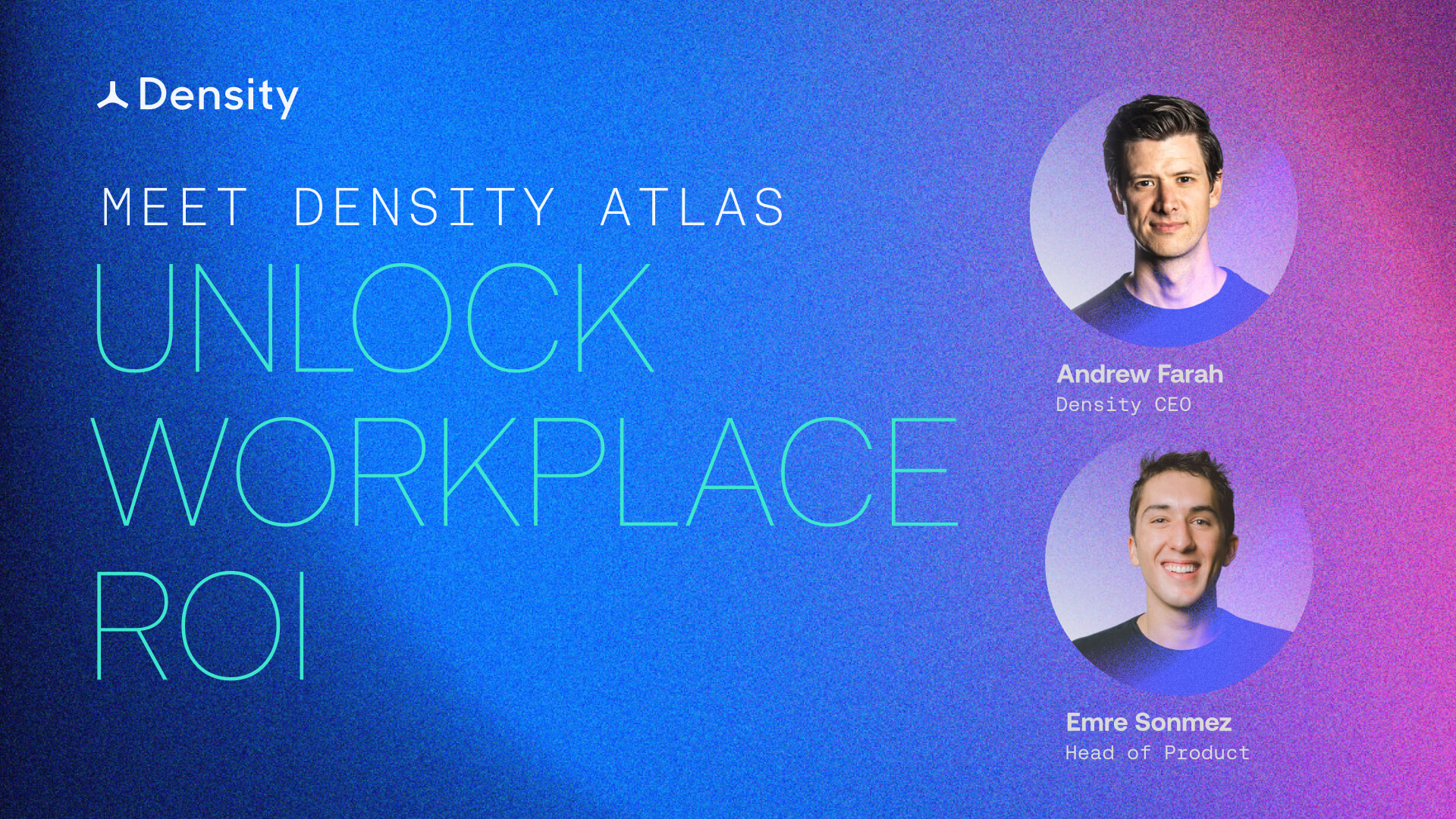Utilization may not be the right metric to measure how your workplace is performing. But if utilization isn’t the right metric, what is?
“Utilization as a concept is broken and a little bit arbitrary.”
Andrew Farah — Density CEO
That is a question Density CEO Andrew Farah and Head of Product Emre Sonmez explored as they showcased our newest app, Density Atlas, to an audience of global workplace leaders.
Creating Critical Mass
While developing Atlas, we asked F500 workplace leaders what their biggest challenges were. Two key themes emerged:
- Do we have the right types of spaces?
- Do we have the right amount of space?
As we dug deeper into these challenges and analyzed how people use the office when they come in, what we discovered is that the question we all should be asking is, “How much space do we need to create the office buzz employees want?”
We call this Critical Mass, the ideal balance of space and human energy that creates a better workplace experience for employees. Atlas was designed to show you if your spaces are achieving it –– and what to do if they’re not.
How Atlas measures critical mass
“When people come back to physical buildings, the question that is on everybody’s mind is, ‘How do you create a critical mass of people on a floor or in a space?’”
Andrew Farah, Density CEO
Understanding the critical mass of your spaces requires more than just a best guess. And employee surveys don’t provide the level of unbiased specificity needed.
Atlas provides the insights it takes to make critical decisions:
- How many square feet you need per person: Reduce your real estate footprint to what’s necessary. Project expansion needs based on future hiring.
- Which amenities employees prefer: Provide more of what employees want, and stop wasting money on amenities no one uses.
- What is the right ratio of “me” to “we” spaces: Give employees the right amounts and types of spaces to improve the employee experience and raise productivity.
- Which desk configuration has the highest utilization: Find the best layout for your office so desk space isn’t sitting empty.
- Which office floors are underperforming: Create strategies to improve utilization or close those floors and save money on utility and cleaning costs.
The full range of Atlas’ capabilities can help you understand the ROI on real estate costs, and design workplaces that support your RTO goals.
“It’s a very strange time in real estate and [the] workplace, Farah says. “We’re working to build tools that can be fundamentally useful to some of the decisions that you all are going through.”
The accurate, unbiased utilization data provided by Atlas shows you exactly how employees use your space. Do they prefer collaborative areas or focus spaces? Where are the hotspots in your building, and why are they popular? Which days have the lowest occupancy and would benefit from incentivized programs?
“The reason [Atlas] is important for workplace and real estate teams is because it gives you empirical data to inform strategic decisions about what you invest in, or what you divest yourself of,” Farah says. “Really great, clear data fundamentally changes the outcomes of what you invest in and what you don’t.”
See more of Atlas and how it empowers F500 companies to unlock their workplace ROI.
